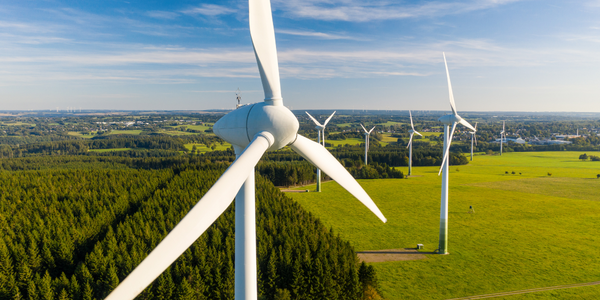下载PDF
Wind River and Parkeon: Making the Smart City a Reality
技术
- 分析与建模 - 计算机视觉软件
- 平台即服务 (PaaS) - 应用开发平台
适用行业
- 海洋与航运
- 可再生能源
适用功能
- 产品研发
用例
- 智慧城市运营
- 智能停车
服务
- 系统集成
挑战
作为实现这一愿景的起点,Parkeon 正在开发其下一代 StreetSmart 终端。然而,一个主要挑战是将新终端与公司的后台业务系统连接和集成。
Parkeon 咨询了一些解决方案提供商。 Wind River® 已经与该公司进行了一些开发工作,并参与了该公司早期版本仪表中的嵌入式应用程序。
在讨论中清楚地表明,风河拥有为管理已部署仪表提供最佳解决方案的技术和服务,并且能够共同设计和帮助集成解决方案的连接部分。
客户
帕肯
关于客户
Parkeon是开发下一代停车终端的城市交通技术的全球领导者。该公司希望将主要智能从支付站转移到云端,然后将一个简单的停车收费表变成一个有用的、街上物联网联网的信息亭。它希望将新终端与公司的后台业务系统连接和集成。
解决方案
Wind River Professional Services 与世界各地的组织合作,确定解决方案要求并共同创建设计,使他们能够加快上市时间、降低总拥有成本 (TCO) 并优化系统生命周期内的性能。
Wind River 团队通过与全球各种客户合作开发物联网解决方案获得了独特的见解,这从业务和技术角度增加了解决方案成功的可能性。
该小组还完全熟悉端到端物联网系统各个方面的安全要求和措施。 Parkeon 尤其关注安全问题。
运营影响
数量效益
相关案例.

Case Study
Remote Monitoring & Predictive Maintenance App for a Solar Energy System
The maintenance & tracking of various modules was an overhead for the customer due to the huge labor costs involved. Being an advanced solar solutions provider, they wanted to ensure early detection of issues and provide the best-in-class customer experience. Hence they wanted to automate the whole process.

Case Study
Vestas: Turning Climate into Capital with Big Data
Making wind a reliable source of energy depends greatly on the placement of the wind turbines used to produce electricity. Turbulence is a significant factor as it strains turbine components, making them more likely to fail. Vestas wanted to pinpoint the optimal location for wind turbines to maximize power generation and reduce energy costs.

Case Study
Siemens Wind Power
Wind provides clean, renewable energy. The core concept is simple: wind turbines spin blades to generate power. However, today's systems are anything but simple. Modern wind turbines have blades that sweep a 120 meter circle, cost more than 1 million dollars and generate multiple megawatts of power. Each turbine may include up to 1,000 sensors and actuators – integrating strain gages, bearing monitors and power conditioning technology. The turbine can control blade speed and power generation by altering the blade pitch and power extraction. Controlling the turbine is a sophisticated job requiring many cooperating processors closing high-speed loops and implementing intelligent monitoring and optimization algorithms. But the real challenge is integrating these turbines so that they work together. A wind farm may include hundreds of turbines. They are often installed in difficult-to-access locations at sea. The farm must implement a fundamentally and truly distributed control system. Like all power systems, the goal of the farm is to match generation to load. A farm with hundreds of turbines must optimize that load by balancing the loading and generation across a wide geography. Wind, of course, is dynamic. Almost every picture of a wind farm shows a calm sea and a setting sun. But things get challenging when a storm goes through the wind farm. In a storm, the control system must decide how to take energy out of gusts to generate constant power. It must intelligently balance load across many turbines. And a critical consideration is the loading and potential damage to a half-billion-dollar installed asset. This is no environment for a slow or undependable control system. Reliability and performance are crucial.

Case Study
Remote Monitoring and Control for a Windmill Generator
As concerns over global warming continue to grow, green technologies are becoming increasingly popular. Wind turbine companies provide an excellent alternative to burning fossil fuels by harnessing kinetic energy from the wind and converting it into electricity. A typical wind farm may include over 80 wind turbines so efficient and reliable networks to manage and control these installations are imperative. Each wind turbine includes a generator and a variety of serial components such as a water cooler, high voltage transformer, ultrasonic wind sensors, yaw gear, blade bearing, pitch cylinder, and hub controller. All of these components are controlled by a PLC and communicate with the ground host. Due to the total integration of these devices into an Ethernet network, one of our customers in the wind turbine industry needed a serial-to-Ethernet solution that can operate reliably for years without interruption.

Case Study
Temperature monitoring for vaccine fridges
Dulas wanted a way to improve the reliability of the cold chain, facilitating maintenance and ensuring fewer vaccines are spoiled. Dulas wanted an M2M solution which would enable them to record and report the temperature inside vaccine refrigerators.

Case Study
IoT Powering A New Way to Light Streets with Bifacial Solar Panels
When James Meringer’s commercial contracting business experienced a rapid increase in solar projects, he also saw an opportunity to extend the benefits of solar by using the bifacial solar panels he’d become familiar with in new ways. Bifacial solar panels enable sunlight from both sides of the panel, making it a more efficient harvest of solar power. Seeing the panel’s power, James and his team set out to use the same technology for street lighting. Until now, solar street lights have served as utilitarian solutions that force designers to choose between form and function. The Mira Bella Energy team has changed that.





